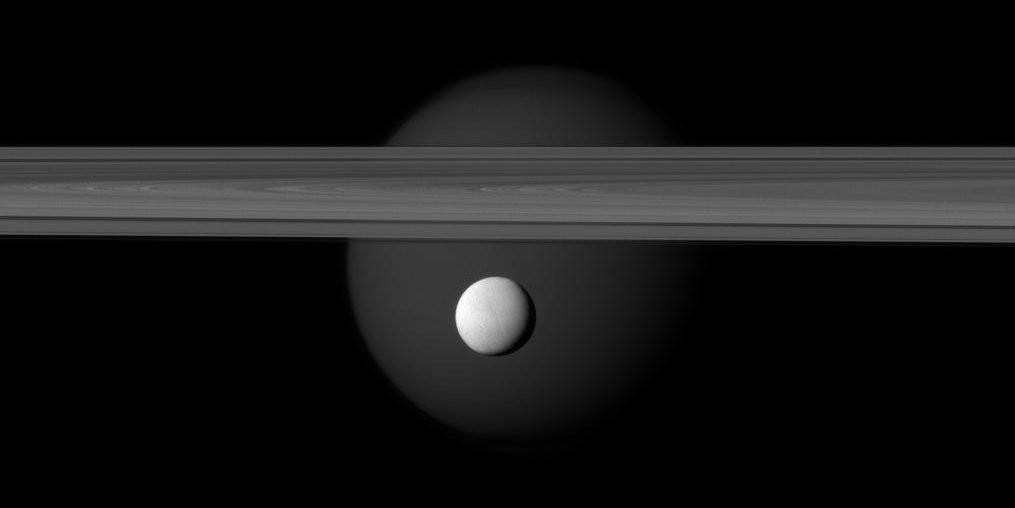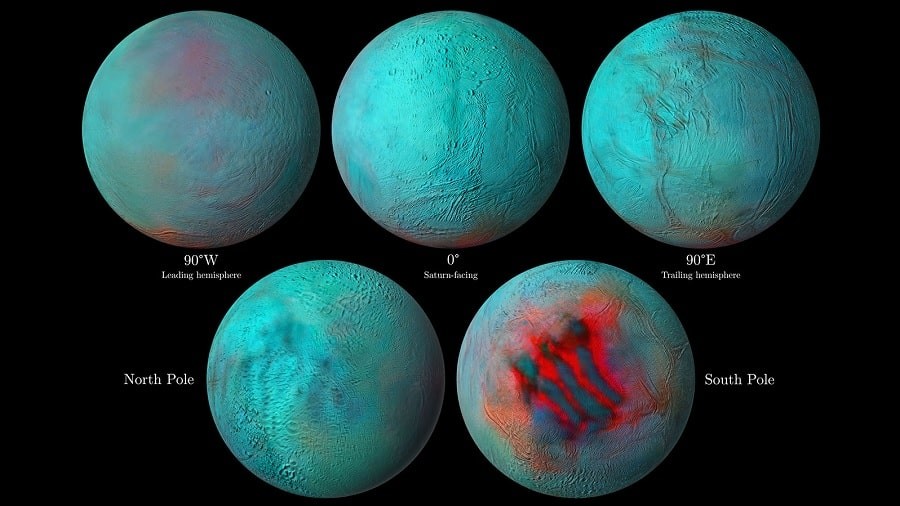An analysis of data collected by the Cassini probe proves that fresh ice regularly lines the northern hemisphere of Enceladus. Details of the study are published in the journal Icarus.
In 2017, after thirteen years in the Saturn system and more than twenty years criss-crossing space, NASA's Cassini orbiter, running out of fuel, began a spectacular plunge into the planet's atmosphere. Although the probe is no longer available, its data continues to be analyzed with the aim of learning more about the gas giant and its many moons.
Recently, a NASA team used data from the Cassini Visible and Infrared Mapping Spectrometer (VIMS) to better understand the geological activity of the moon Enceladus .
The researchers specifically analyzed the light reflected from Saturn, its rings and several of its satellites on the surface of the moon. Capable of separating light into its different wavelengths, the instrument therefore allowed scientists to determine the composition of its surface .

We have known for fifteen years that Enceladus regularly projects on the surface, at the level of the south pole, plumes of ice emanating from the depths. Infrared signals from this new global spectral map of the moon confirm this geological activity.
More surprisingly, however, some infrared features also appeared in the northern hemisphere. There are much less than in the South, of course, but there are . In other words, a resurfacing of the landscape seems to take place regularly at the level of the two hemispheres.

"Infrared shows us that the surface of the south pole is young. This is not a surprise since we already know the jets that project icy materials into it “, explains Gabriel Tobie, from the University of Nantes in France and co-author of the new study. “Now, thanks to these infrared eyes, we can tell that much of the northern hemisphere also looks young. And that it was probably active not too long ago “.
The researchers point out that to the north, this "cool ice" could be thrown from the subterranean ocean of Enceladus to the surface by plumes , as in the south, or by a more gradual movement through the fractures of the crust .
As a reminder, Enceladus is, along with Europa and Mars, one of our best chances of being able to detect extraterrestrial life one day. According to a recent study, its underground ocean may indeed be old enough to support microbial life . Other work has also suggested that there are enough nutrients in this body of water to be able to feed it.